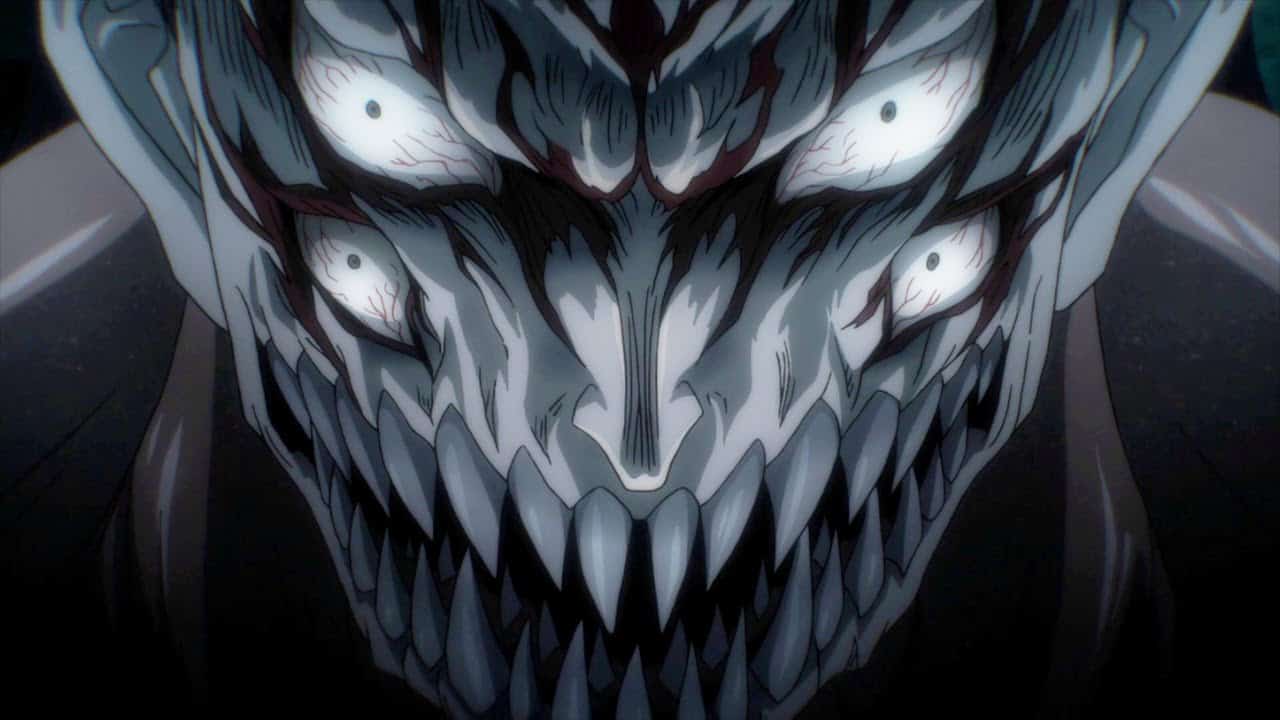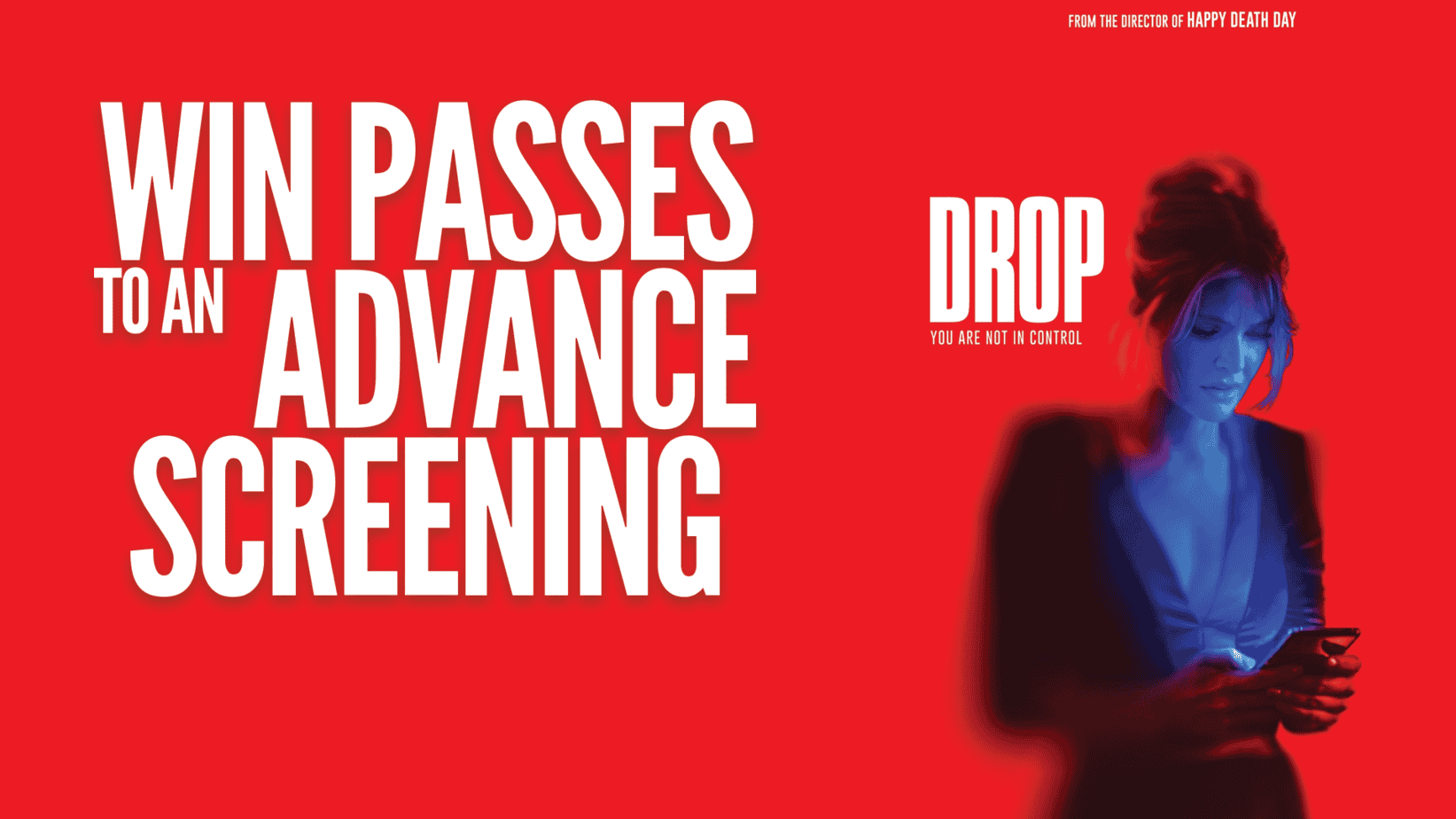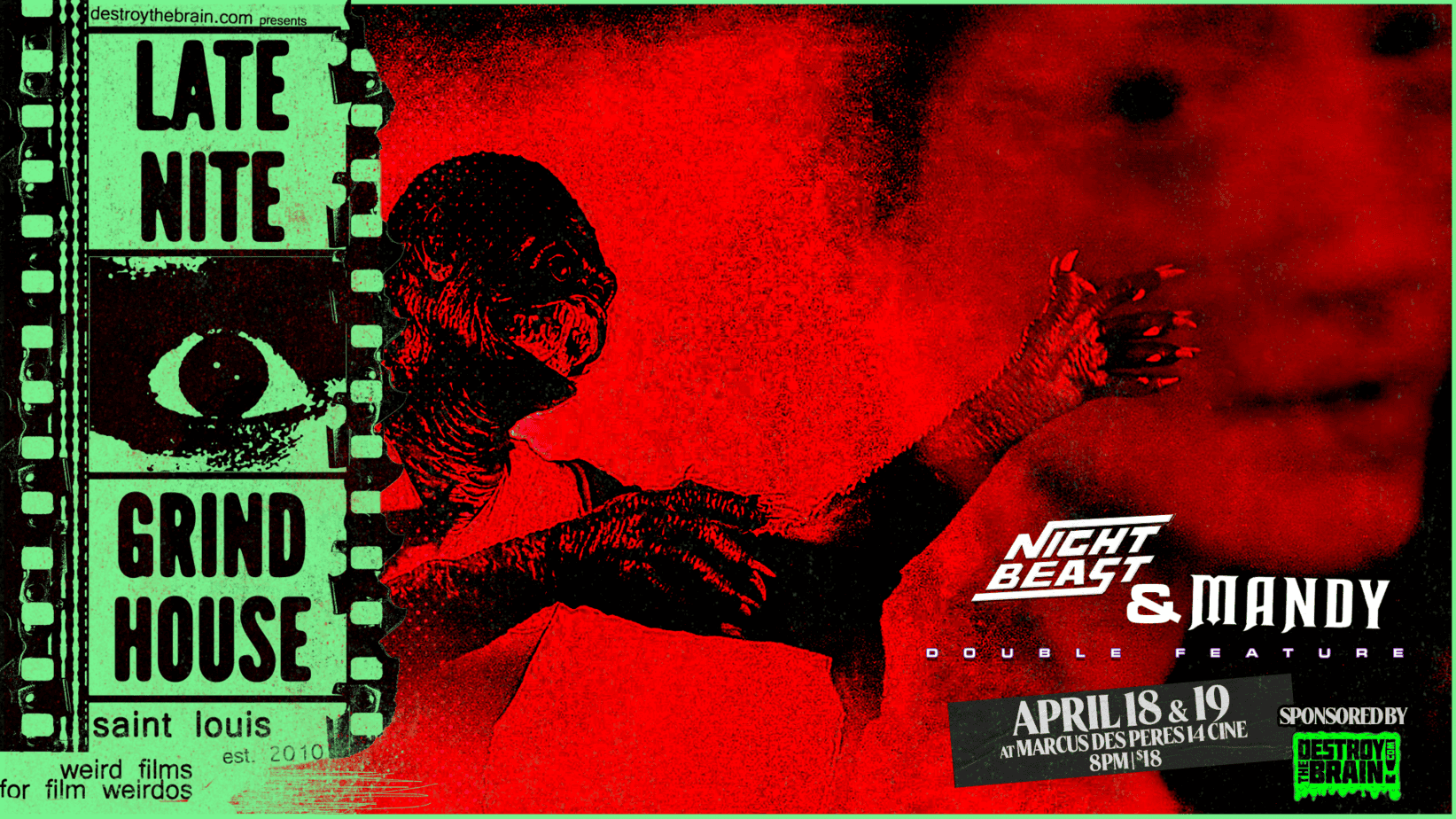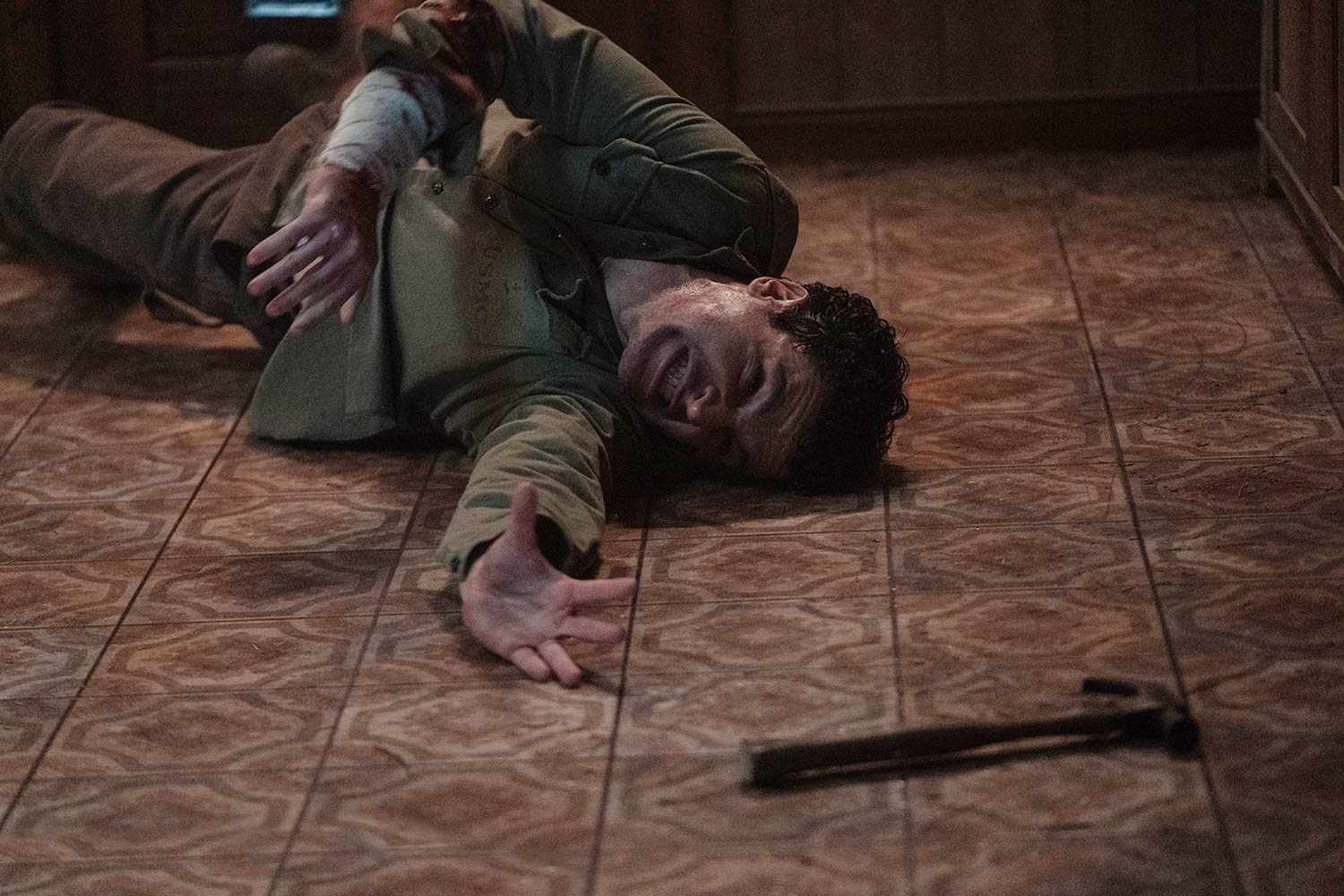
Horror Recommendations to Finish Ani-May Bloody
I have been fascinated with horror movies, books, and just October in general since I was a child. I thank my Dad for showing me Child’s Play, Alien, and Halloween when I was about 3 years old; as I got older, I still loved horror and branched out way more. In high school, I started venturing into anime and discovered the many genres it has to offer, including horror.
Every year, I pick two or three Horror Anime to binge and usually start early such as the beginning of the year by planning my October watches as I want to have a good mix for the spooky season. I start looking at all the options I could choose from early in the year. Now, with so many great new Horror Anime that have come out (Higurashi: Gou and Higurashi: Sotsu), Chainsaw Man (just finished airing), and coming out (Junji Ito Mananic: Tales of the Japanese Macabre). Why Horror Anime you ask? I feel that it gets overlooked quite a bit and there are more Horror anime-themed shows than most realize as it’s also one of the types of media I am passionate about.
I have cultivated ten Anime titles to celebrate the closure of Ani-MAY (a month-long celebration of anime) to prepare you for your exploratory adventure, I recommend checking out the following titles to keep the Anime-train rolling or if you want to add some new flavors for your October spookytime watch list. This was a difficult list to make as there are many good titles to choose from, not to mention the variety of horror genres from vampires, zombies, the supernatural, etc. is more vast – it’s such a gray area with everyone having their own type and style they enjoy.
Below are the top ten I recommend with a bonus title!*
*Note these are not in order of favorite and range from movies, OVAs (Original Video Animation), and TV.
Perfect Blue (1997)
Perfect Blue (1997; Movie) is a title that most Cinemaphiles have either seen or are at least aware of. Directed by Satoshi Kon who is known for his unique animation style and themes of fiction and reality, Perfect Blue was Kon’s first full-length animated movie. An adaptation of the novel was written by Yoshikazu Takeuchi and it has received much acclaimed success worldwide. Why is this considered Horror? Perfect Blue dives into the basis of what is fiction and reality taking you through a wild ride and gives off the feeling of a giallo film. The story follows a retired pop singer turned actress, Mima Kirigoe, whose sense of reality starts to come into question when she is stalked by an obsessed fan. Perfect Blue begins with idol group member Mima as part of (CHAM) performing onstage and announcing her retirement; from there you follow Mima trying to become a successful actress and see her lose her sense of reality. The most chilling thing about Perfect Blue involves an obsessed fan(s); watching how these obsessed individuals follow her every move via a website called “Mima’s Room” and how each decision she makes on her own drives this obsessed human being into a murderous craze. As you go deeper into the movie, you start to question if Mima is imagining it or is it the obvious stalker you see following her, or is it perhaps something else?
Another (2012)
Another is a TV show that is based on the 2009 novel by Yukito Ayatsuji and produced by P.A. Works (Angel Beats; Shirobako) and directed by Tsutomu Mizushima. The series is set in 1998 and focuses on main character Koichi Sakakibara, who has been transferred to the middle school of his mother’s hometown of Yomiyama where a mystery awaits him. Once he meets the mysterious girl Mei Misaki, things start to unravel as he learns about a mysterious curse upon the class he is in: Grade 9, Class 3 (3-3). In the first episode, the ‘Misaki’ curse is discussed but I love that as you follow along, you begin to pick up each piece. Another takes you on an interesting ride as it has a little of the Slice-of-Life genre but its horror references and influences along with the mystery aspect make the series memorable. Once Koichi learns of this ‘curse’, classmates begin dying in accidental yet unexplained horrific deaths. In many of these deaths, you can see the Final Destination influence, especially in a scene with a sheet of glass falling. I also love the mention of Stephen King, John Saul, and Lovecraft within the first episodes as you learn that the main character Kouchi Sakakibara is a horror fan. Another holds the gore of the horror genre but also the mystery aspect regarding the ‘Misaki’ class curse. Despite this taking place in a middle school setting, it gives off the perfect eerie vibes from the music to the gore and mystery.
Devilman (1987-1990)
Devilman (1987-1990; OVA):Volume 1 – The Birth (1987) and Volume Two – Demon Bird (1990), both directed by Umanosuke Iida (Hellings (2001); Towa no Quon). Devilman is about a boy, Akira Fudou, who gets involved with the demon world when his friend Ryo shows up with news about an accident in an archeological dig. Ryo informs Akira about an upcoming war between demons and humans; in a ceremony, they try to conjure up the mythical Devilman to combat the upcoming war with dire consequences. While this is the main story line of Volume 1 – The Birth; Volume 2 – Demon Bird continues the story of Devilman fighting these demons to help save humanity. Devilman was created by the famous Go Nagai, who is known for his horror, fantasy, and erotic manga; along with Devilman, he is also known for Cutie Honey. Devilman provides horror immediately with a vivid depiction of the demon world and the variety of fantasy horror demon creations. Both episodes are short, about 50 minutes each, if you watch them together, they play like a movie – which is how I prefer to watch it. Despite Devilman being a horror fantasy, it also gives off a horror superhero vibe as Devilman is a half Devil, half Human who defeats the demons who are taking over the human world. There are many scenes that have been inspired by 80s horror movies, however, as Devilman was created in the 70s as a comic in Japan, it makes you wonder where the creations came from. I myself have yet to read the comic but I love catching little items, such as “oh that reminds me of A Nightmare on Elm Street or The Evil Dead”. This is one of my favorite OVAs in the sense that it is straight to the point and for being two episodes, it’s decently paced. If you want a more fleshed out version or just want more Devilman, you can check out the Devilman TV series from 1972 or Devilman Crybaby that came out in 2018. All three have different animation styles and shows how the industry’s timeline has changed throughout.
Vampire Hunter D: Bloodlust (2000)
Vampire Hunter D: Bloodlust (2000) directed by Yoshiaki Kawajiri (Ninja Scroll, Wicked City, Demon City Shinjuku). Vampire Hunter D: Bloodlust, along with its counterpart Vampire Hunter D (1985) are two of the more popular and well-known animes due to the timeframe they came out and also being feature-length movies, gained a good amount of popularity, and its cult following. In Bloodlust following D, a dunpeal (half vampire/half human) has been hired to track down a notorious vampire, Meier Link, who has kidnapped a woman, Charlotte. The feature offers a futuristic look at vampires, however, it has a Victorian style feel to it with the character designs. The detail in this movie is fantastic and the character development and storyline keep you interested as you follow D on his mission to rescue Charlotte.
Yamishibai
Yamishibai (Japanese Ghost Stories) is a unique TV series that began in 2013. It consists of 13 episodes a season, each running 5 minutes each. Its main character is the “Storyteller”, who appears only at dusk when children gather around to listen to his sinister ghost stories. The stories told are based on Japanese urban legends and myths. The first season was directed by Tomoyo Takashima, while season two was directed by Takashi Shimizu (known worldwide for the Ju-On and the Grudge films) and Noboru Iguchi (The Machine Girl; Mutant Girl Squad). Yamishhibai provides a memorable viewing and an easy one due to its short episode runtime and unique animation style. It was made to mimic the kamishibai (paper play; street-style storytelling) most famous during the 1930s. The eerie stories combined with the kamishibai visual style make for a chilling time that will leave you creeped out. Yamishibai also has one of the catchiest openings as the “Storyteller” introduces himself each time, even those who do not speak Japanese will have the opening music and phrase “Yotterashai, mitterashai, Yamishhibai Jikan da yo” will stick with you. The ending theme is also very odd and catchy – also befitting of the show.
Hellsing (2001) / Hellsing Ultimate (2006)
Hellsing (2001) / Hellsing Ultimate (2006) is an animated series that was adapted from the manga written and illustrated by Kouta Hirano. The Hellsing (2001) TV series is 13 episodes directed by Umanosuke Iida and Yasunori Urata with a screenplay by Chiaki Konaka and ends up veering off from the manga by Kouta Hirano as his work was being published at the time. Hellsing Ultimate (2006) is an 10 episode OVA series that ran between 2006 and 2012 with each episode running 50 minutes and follows the manga extremely closely. Both series have the same general premise, it chronicles the Hellsing Organization, which combats any ghouls, vampires, and other supernaturals that threaten the Hellsing organization and holds the most powerful vampire, Alucard, in her employ. Both Hellsing (2001) and Hellsing Ultimate (2006), despite sharing the same premise and having some similar storylines, both veer in two completely different directions which is why I recommend watching both. Hellsing (2001) did a great job for what was made available at the time; it was brutal, gritty, and the animation captured it well. The storyline isn’t as compelling as Ultimate, but you get to know more about certain characters in Hellsing more than Ultimate and vice versa.
I do find Hellsing (2001) to be slightly boring as at times, I felt like it wasn’t sure where it was going but there are episodes that hit hard in a good way. Hellsing Ultimate (2006) is absolutely fantastic – the gruesome, bloody, storyline is compelling, and the use of traditional animation with CGI is surprisingly excellent, which was not an easy accomplishment. As Hellsing Ultimate was an OVA, there was more room to play with this series than the 2001 version and it shows in every way. Seras Victoria and Ingrid Fairbooks Wingate Hellsing are badass women, and Alucard’s brutality and oddness drive the show. If you are looking for a brutal yet compelling show, Hellsing Ultimate delivers with its apocalyptic feel, gruesome ghouls and vampires, killer soundtrack, and a new look at the Alucard/Hellsing/Nosferatu story. If you are looking to have some nostalgia, like me, give Hellsing (2001) a watch before Ultimate. It may bring back some memories, such as when the Encore Action channel aired it in 2003.
Where to Stream 'Hellsing' (2001)
Powered by JustWatchWhere to Stream 'Hellsing Ultimate' (2006)
Powered by JustWatchHigurashi: When They Cry (2006)
Higurashi no Naku Koro ni (When They Cry; When The Cicadas Cry) (TV series, 26 episodes; 2006) is an anime adaption of the murder mystery visual novel produced by 07th expansion. Higurashi focuses on a group of friends living in the mysterious village of Hinamizawa and the strange events that occur in the year 1983. This all begins when one of the main characters, Keiichi Maebara, moves to the village of Hinamizawa and befriends Mion Sonozaki, Shion Sonozaki, Rena Ryuuga, Rika Furude, and Satoko Houjo and begins learning about the village’s annual Watanagashi festival, and the local deity Oyashiro-sama. Higurashi is unique in its own right in how the show progresses as it has ‘Arcs’, for example, usually four to six episodes comprise an Arc, then a new one will begin afterward. Yes, like the visual novel, it is a murder mystery, however, the show may seem a little disjointed at first, especially once you catch the opening murder then it jumps to a completely different scene. Higurashi is like a mysterious puzzle you are trying to fit together, and I love that about the show. The aesthetic of Higurashi draws you in, from a village in the countryside to the eerie music, the odd characters, the grisly murders, and the mysteries that surround the village of Hinamizawa. Eiko Shimamiya provides the opening theme song and this is one of my personal favorites as it fits so well with the show and sets the mood for what will transpire throughout. Even though I have only included Higurashi, I recommend watching the follow-up series, Higurashi no Naku Koro ni Kai as Kai will provide you with all the answers to the questions that Higurashi poses.
Parasyte -the maxim-(2014)
Parasyte -the maxim-(2014; 24 episodes) is a horror / sci-fi series adapted from the manga written by Hiroshi Iwaaki and directed by Kenichi Shimizu. Parasyte revolves around the main character Shinichi Izumi, a high school student. One night, alien-like creatures arrive on Earth and begin taking over human brains by entering their bodies through the nose, ears, and mouth and burrowing into the brain. One of these alien creatures attempts to burrow into Shinichi’s brain and fails, instead, he gets stuck in his hand; Shinchi ends up calling him ‘Migi’. As Shinichi prevented ‘Migi’ from traveling up to his brain, both Shinichi and Migi retained their separate personalities and intellect, however, this also leads to them being attacked by other parasites who realize this. Parasyte follows Shinichi and Migi as they try to survive and defeat the other parasites that are taking over the human population. Parasyte offers an interesting story that reminds you of ‘Night of the Creeps’ and ‘Invasion of the Body Snatchers’ in a sense, however, these parasites taking over humans seem more intelligent and have a more gruesome aspect to them when they eat humans or each other. Parastye also gives off that Cronenberg feel with the use of body horror, which you don’t see too much in anime; by body horror, Migi on Shinichi’s right hand is a great example of that usage, along with how the Parastye’s heads transform when going to eat someone. Parasyte also looks into many psychological and philosophical aspects as well, such as the meaning of humanity, its existence, how humans and other creatures co-habilitate, and what love really is. I love the use of both horror and sci-fi Parasyte offers, not to mention there are some very memorable moments throughout the show, it sticks with you and also is known for scenes where heads get eaten. The animation is very smooth, it has a great score, and the story will draw in both horror and sci-fi fans alike.
Shiki (2010)
Shiki (2010, 22 episodes, 2 OVAs) literally meaning Corpse Demon revolves around a small town called Sotoba. When the mysterious Kirishiki family moves into an abandoned mansion, odd deaths start occurring in the village. When a teenager is found lifeless and later succumbs to a strange illness, the local doctor, Toshio Okazaki starts investigating the deaths in the town. Yuuki Natsuno, a newer resident of the town, notices the changes and death that begin occurring around him and gets pulled in. Shiki is an anime adaptation of the manga illustrated by Ryu Fujisaki, which is an adaptation of the novel of the same name written by Fuyumi Ono in 1998. Shiki is one of those anime that stuck with me from the opening theme performed by BUCK-TICK to the character designs, development, and intriguing story. Once you get to episode four, you will have an idea what the ‘Shiki’ are and the big inspiration ‘Shiki’ was drawn from. A hint is it is dedicated to a famous Stephen King book and once you start watching it, you will see where it obviously got its inspiration. Another interesting fact about ‘Shiki’ is the naming of each episode is mostly related to death and the corruption of the physical body. Shiki’s storyline may not be unique storyline wise but it puts an interesting spin on this type of genre, especially with how each character progresses throughout the show, and the score and sounds play a huge role in the mood and dark feel of the show. Not only is the theme of death the main tone, but the score plays perfectly to that, especially when the ‘Shiki’ move at night.
Jigoku Shoujo: Hell Girl (2005)
Jigoku Shoujo (Hell Girl) (2005, 26 episodes) was conceptualized by Hiroshi Watanabe and directed by Takahiro Omori; it ran a total of four seasons, with the last airing in 2017. Jigoku Shoujo is mainly self-contained episodes with each involving a person who is undergoing some type of torment or duress, out of their experience they access a website that only appears at midnight called the Hell Correspondence and submit a request for vengeance against their tormentor. Ai Enma, the Hell Girl appears in front of them and gives the requestor a doll with a red string on its neck. Ai Enma explains that once that red string is pulled, the person they are seeking vengeance against will be sent to hell, however, Ai Enma and her team torment the antagonist before bringing them to hell. Once the protagonist chooses to pull the string, that person (the antagonist) is brought to hell after being tormented and in return, when you die your soul will be tormented in hell for eternity. Jigoku Shoujo’s focus on the supernatural and human emotions makes for a creepy and memorable anime with many horror elements present. Horror is a great representation of human nature and Jigoku Shoujo does just that, showcases the cruel aspect of human nature and gives the option to send those causing you grief to suffer in return. When Ai Enma and her crew torment the antagonist before bringing them to hell, the torment is creative, eerie, trippy, and colorful; it’s also befitting how each person receives their punishment. Jigoku Shoujo not only offers great visuals but a great score as well, with the iconic opening song, ‘Sakasama no Chou’ performed by SNoW and the soft yet eerie ending ‘Karinui’ by Noto Mamiko (also the voice of Ai Enma). As each episode can easily play out individually, as you get further into the season and dive into Futakomori, Mitsuganae, and Yoi no Togi, you will see one or two recurring characters, but overall this is a show you can pick up at almost any episode.
bonus title!
Sankarea
Sankarea (2012; TV series 12 episodes, 1 OVA) is a romantic comedy zombie series that oozes with horror references. This is a unique one I decided to add as it can be a good palate cleanser depending on how you look at it. Sankarea is a zombie love story, directed by Shinichi Omata and adapted from the manga by Mitsuru Hattori. Sankarea follows a boy named Chihiro Furuya, who is obsessed with zombies; his room is filled with zombie goodness, he literally lives, eats, and sleeps zombies. One day, Chihiro’s beloved cat Babu is hit and killed by a car. Chihiro discovers an old manuscript that has a formula for bringing the dead back to life. While attempting to resurrect Babu, he meets Rea Sanka, a wealthy popular girl who he accidentally overhears one of her secrets. They both become friends trying to resurrect Babu. However, Rea Sanka steals some of the potion in an attempt to commit suicide but to her surprise it does not work. Rea Sanka ends up having a terrible accident and due to drinking the potion, comes back as a zombie and moves into Chihiro’s family home. Sankarea is more of a slice-of-life show, with horror aspects – Chihiro’s zombie obsession adds to the aesthetic with all the horror references galore making it for a cute fun show (and picking out the inspirations is fun!)

ST. LOUIS: Win Passes to an Advance Screening of ‘DROP’
Live in St. Louis and are free Tuesday, April 8th? We have some tickets that you could score for the

Late Nite Grindhouse Presents: ‘NIGHTBEAST’ & ‘MANDY’ Double Feature at Marcus Des Peres 14 on April 18 and 19
Our annual April tradition of showing Panos Cosmatos’s modern cult-classic in Mandy is here. T

‘WOLF MAN’ Review: Blumhouse’s Body Horror Bummer
While 2017’s Dark Universe was scrapped shortly before it began its expansion, Blumhouse grabbed d
